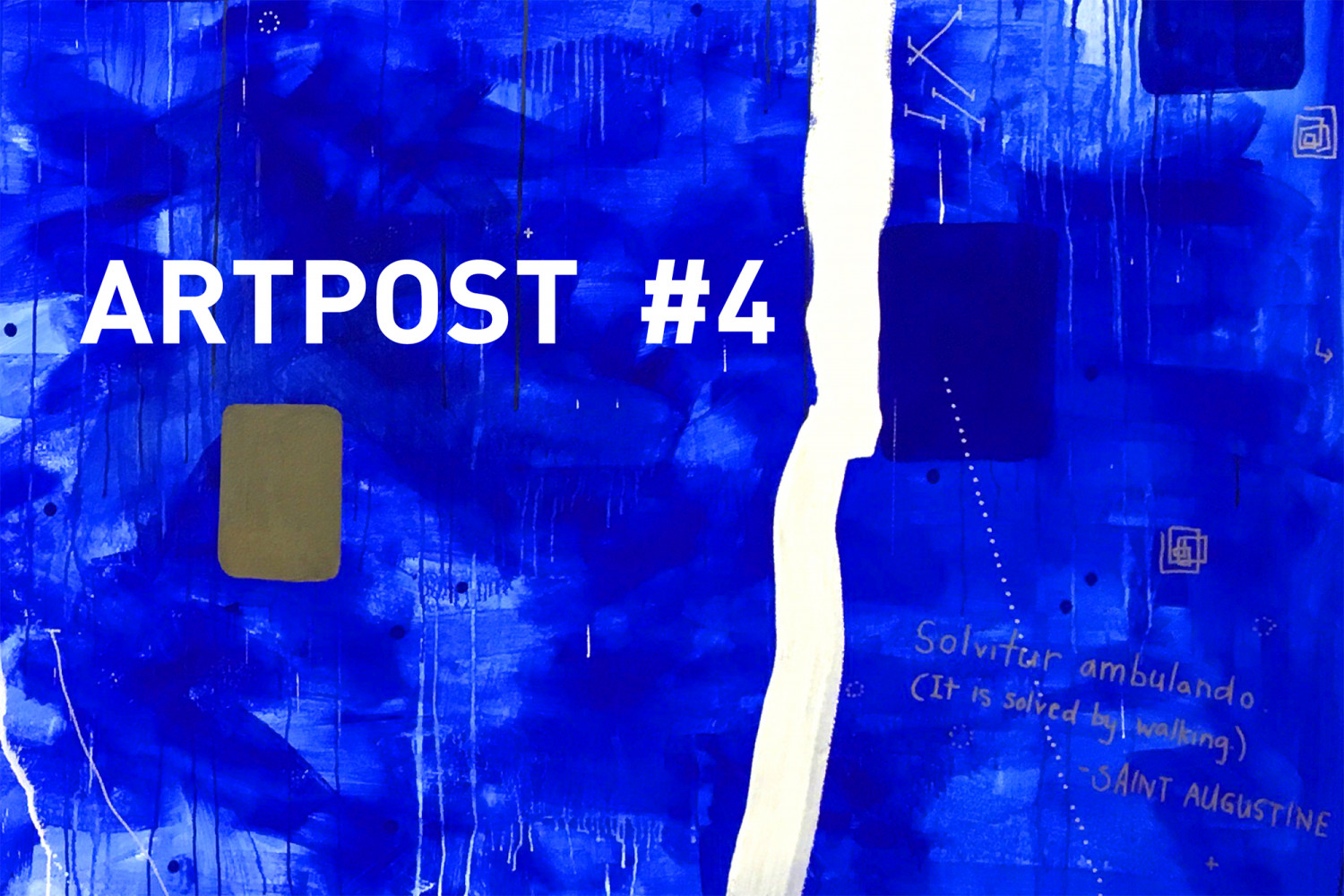
ARTPOST #4
DPAG Weekly Update
27 April 2020
Kia ora dear friends of Dunedin Public Art Gallery!... something old (well maybe not so old but sorely missed); something new (Gordon Walter's Chrysanthemum); something borrowed (we borrow from the Surrealists this week); something to do (take a virtual journey out to Otago Peninsula) and something more...
__________________________________
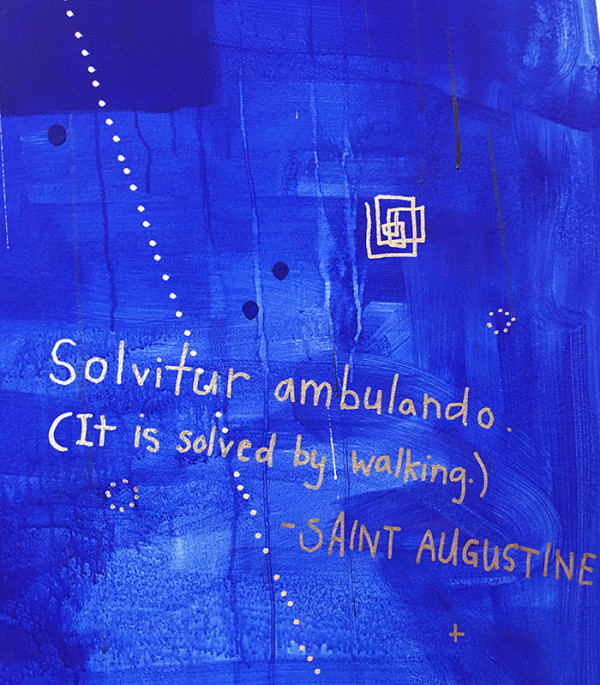
something old
continuity – a favourite artwork
Gallery Director, Cam McCracken, walks us through the Gallery's Big-Wall work, The Falls, by John Reynolds
A work I’ve been thinking about increasingly during this time of lockdown – especially on my daily walk around the bays of the Otago Peninsula, where I live – is the large-scale mural painting The Falls by John Reynolds, currently displayed on the Gallery’s ‘Big Wall’ in the foyer. It was installed just over a year ago, and I think it’s only now with time and space away from the work that I am beginning to fully appreciate its complexity and the subtle nuances it contains about our place in the world and how we navigate through it.
The work comes as part of Reynolds’ long period – perhaps journey – of contemplation at the influence Colin McCahon has had on him. Paying homage to the elder artist The Falls refers directly to McCahon’s Waterfall theme and variations of 1966, a similarly large scale painting permanently on display in the main Library building at Otago University, testing its imagery and content. The waterfall is a regularly recurring motif in McCahon’s paintings, often painted starkly against a dark background – a beam of light in the darkness, the arc or trajectory of life.
The activity of walking is also an important component in The Falls which makes a number of references to Colin McCahon’s ‘missing hours’ in Sydney in the mid 1980s. An unfortunate incident, a year before his death, when an unwell McCahon was separated from his companions, became disoriented and was missing in the inner city overnight. He was discovered 5 km away the next day, a little bewildered and confused and with no real recollection of what had happened during his disappearance. The image here of being cast out into the wilderness is strong, but also is the activity of walking toward some kind of salvation.
There is cartography in the Falls, the streets of McCahon’s mystery wanderings in Woollamaloo, as well as map fragments of central Dunedin. There are invitations in the work for the viewer to walk, and while doing so to daydream and think, to cut your own path and as you do to step towards a new future.
See the entire work and more details on the exhibition page, click here
[above: JOHN REYNOLDS The Falls 2019 (detail). Acrylic paint, water-based metallic paint markers, water-based crayons, graphite, and coffee on wall]
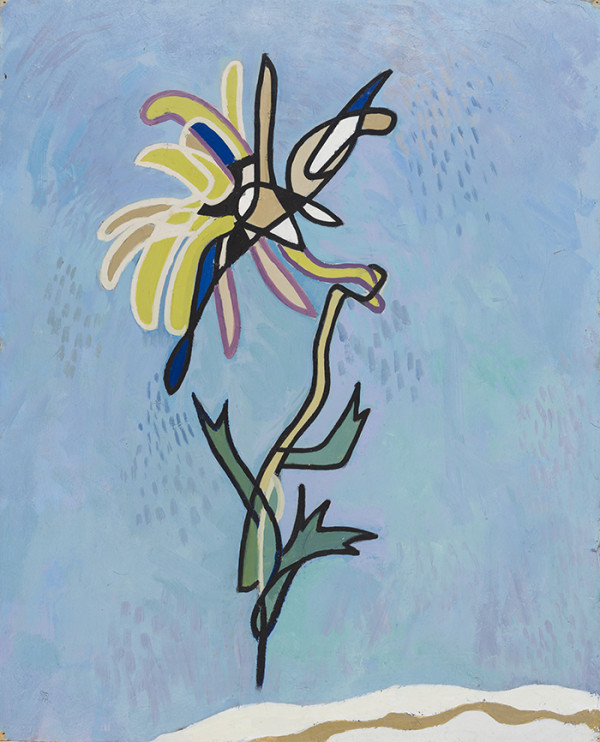
something new
optimism for the future – a recent acquisition
Gordon Walters
Chrysanthemum 1944
Building an art collection sometimes requires creative thinking. As is the case in many public institutions, the collection here at Dunedin Public Art Gallery continues to grow through a combination of purchases, donations and bequests. Sometimes, however, bold new ways of thinking are needed to help achieve some of our more ambitious collecting goals. In 2015, Dunedin Public Art Gallery and Christchurch Art Gallery Te Puna o Waiwhetū embarked on an innovative collecting project, to work in partnership to build a shared collection of benchmark works owned by both galleries and the communities they serve. It was this programme that, in 2018, saw the joint acquisition of the remarkable painting Chrysanthemum (1944) by Gordon Walters.
Most recognised for his hard-edged geometric abstraction inspired by kōwhaiwhai, Chrysanthemum is one of the earliest existing paintings by Walters, showing his first steps towards abstraction. It was among the artist’s favourite works, and a painting he kept in his personal collection and returned to when he felt the need to recharge. In 1974 he wrote of this work ‘The sense of freedom and pleasure I felt in painting the picture is still with me . . . I haven’t sold it; I keep it stacked out of sight and, perhaps once or twice a year, take it out and look at it.’[1] Recognising the art historical importance of Chrysanthemum, both Dunedin Public Art Gallery and Christchurch Art Gallery Te Puna o Waiwhetū were thrilled to acquire this painting for the benefit of future generations.
[GORDON WALTERS Chrysanthemum 1944, alkyd on cardboard. Collections of the Dunedin Public Art Gallery, with funding from the Dunedin City Council and Bateman Bequest, and Christchurch Art Gallery Te Puna o Waiwhetū. Jointly purchased 2018.]
_________________________________
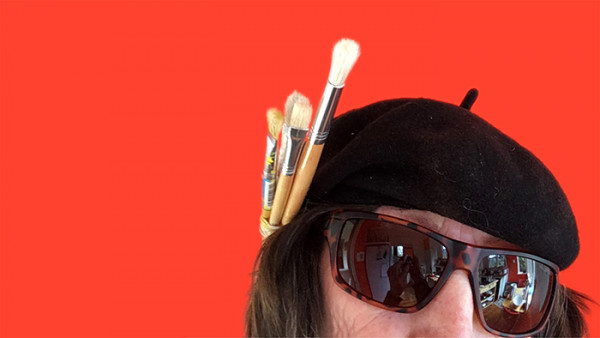
something borrowed
borrowed happiness — from Surrealism
Surrealist Fashion – HATS!
Surrealist artist Elsa Schiaparelli, famous for her 'shoe hat', wrote in her book Shocking Life: “Once or twice I had thought that instead of painting or sculpture … I could invent dresses or costumes. Dress designing, incidentally, is to me not a profession but an art.”
This week we look at how to think outside the square, and design a hat that references Surrealism, an art movement from around the 1930s, which is still, today, referenced by high fashion milliners such as Philip Treacy and Steven Jones. Even prior to this period - in the 1780s - women's hair (or the wig) was fashionably tall, and included various decorative elements worn on special occasions that could easily fit into the genre of Surrealism (such as an image of a miniature sailing ship, including masts and sails perching atop the wig worn by a fashionable woman, the curls of the wig perhaps depicting waves!).
You will need a willingness to be bold and have fun making your hat.
Firstly you may find it easier if you have a hat of some sort at home that you can experiment on. Or, too, you may want to create something from scratch, such as a bubble-wrap hair decoration. Here are suggestions for materials you may have at hand:
- Strips of plain paper – if you use the blunt side of scissors to run down these strips, they will curl up – or you can use the strips as a plain decorative item
- Make a rudimentary hat by cutting a piece of card about 250mm square, then lay a plate on the card and cut round it to make a circle. Make a cut from one edge to the centre of the circle, and fold one side under and one side over to make a hat with a pointed top. Staple or glue the two under and over pieces to each other at a point where the hat fits your head. Decorate
- Other materials: Xmas ribbon, baking foil, crepe paper, wool, toilet paper roll (if you dampen one end of the toilet paper it will turn into a 'flower'), an old mesh bag, leaves, feather duster, fruit, bubble-wrap, a peaked cap with costume jewellery dangles, cotton buds, gloves (especially white), coloured sox, pipe cleaners and anything in the children's art box that may work (ask first!)
- glue, staples, pins, safety pins, needle and thread, scissors
- Check out some of the Mod 1960s fashions in the link below influenced by astronauts and outer space – they are ideas that would be considered 'way out'.
These general resources below will give you some inspiring ideas:
http://collections.vam.ac.uk/item/O183849/shoe-hat-hat-elsa-schiaparelli/
https://thehistoryofthehairsworld.com/hair_18th_century.html
https://www.philiptreacy.co.uk/en
http://www.stephenjonesmillinery.com
https://flashbak.com/1960s-space-age-fashion-a-retrospective-10963/
_________________________________
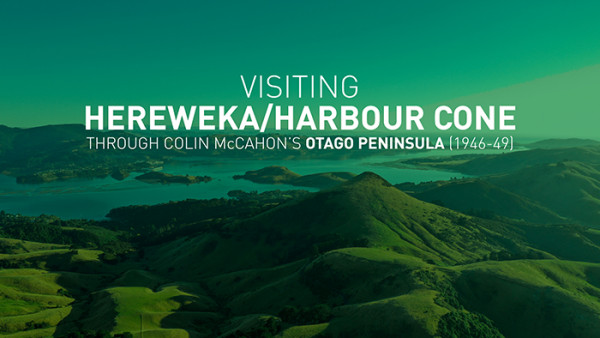
Visit Hereweka/Harbour Cone through Colin McCahon's Otago Peninsula (1946-49)
As a young artist, Colin McCahon spent many hours walking the hills of Otago Peninsula, drawing and planning early paintings. CLICK HERE to join curator Lucy Hammonds on a virtual visit to this landscape, and learn more about McCahon's work featured in our exhibition A Land of Granite: McCahon and Otago.
_________________________________
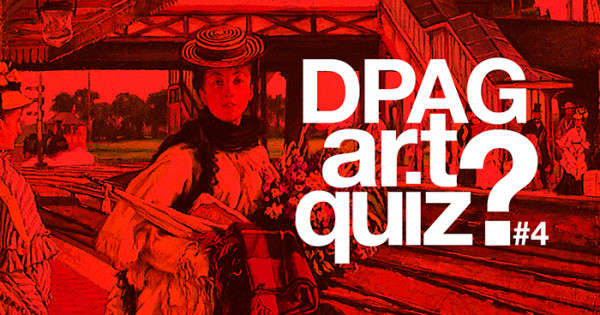
and something more...
1. The DPAG Art Quiz
Another opportunity to test your local and international art knowledge, (how is she going to deal with all that baggage?) click this link.
2. More ART at HOME activities
We continue to add new ART at HOME activities on to our ART at HOME page on our web site, including this new one by John Neumegen – Quiz Glasses – make your own fun interactive quiz game... click this link.